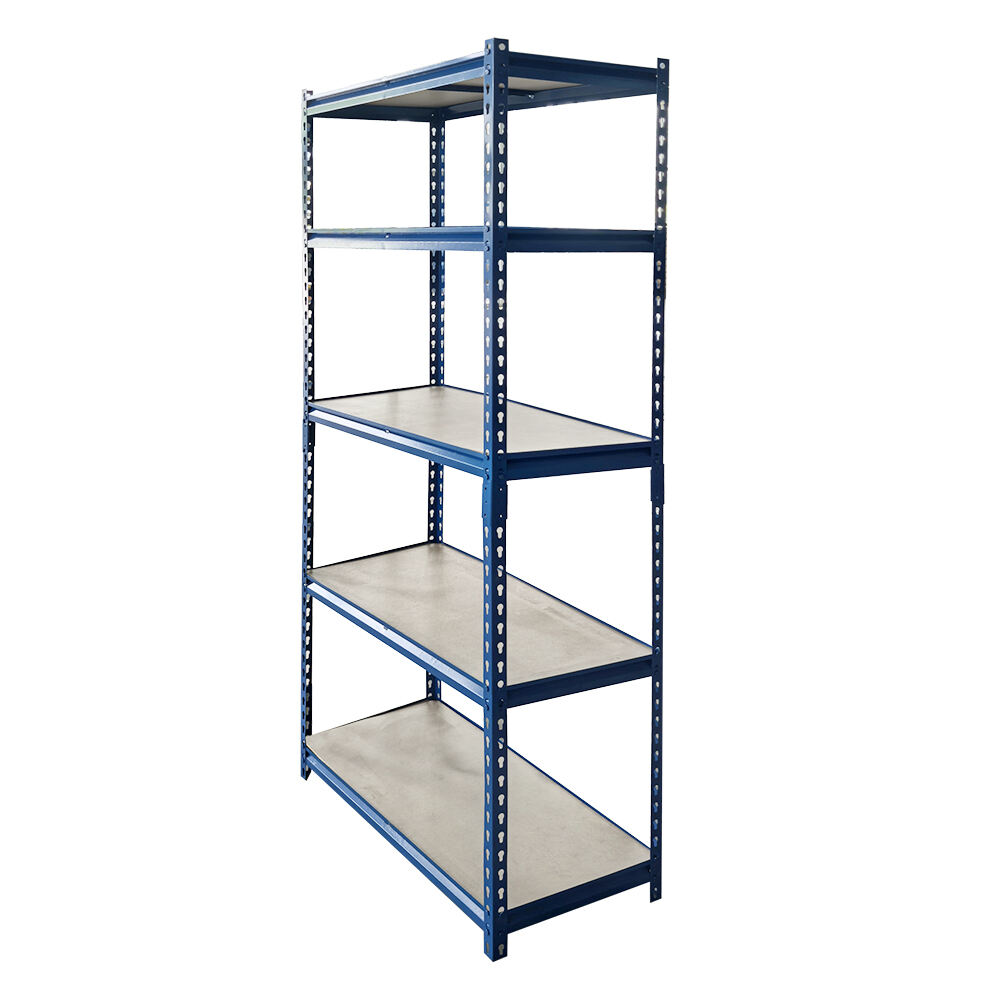Transforming Modern Warehouses with Industrial Storage Solutions
The backbone of efficient B2B warehousing lies in its storage infrastructure, and heavy-duty steel shelving stands at the forefront of this revolution. As businesses expand and supply chains become more complex, the demand for robust, adaptable storage solutions continues to grow. Modern warehouse managers understand that implementing the right shelving system can dramatically improve operational efficiency, maximize space utilization, and enhance overall productivity.
Today's industrial storage landscape requires solutions that can withstand intense daily usage while maintaining structural integrity. Heavy-duty steel shelving has emerged as the premier choice for businesses seeking long-term reliability and customizable storage options. From distribution centers to manufacturing facilities, these robust storage systems prove invaluable in managing inventory and streamlining operations.
Core Benefits of Industrial Steel Storage Systems
Superior Strength and Durability
When it comes to warehouse storage, strength is non-negotiable. Heavy-duty steel shelving provides exceptional load-bearing capacity, capable of supporting thousands of pounds per shelf level. The robust construction ensures stability even under maximum load conditions, making it ideal for storing heavy machinery parts, bulk materials, and densely packed inventory items.
The durability of steel shelving systems extends beyond mere weight capacity. These units resist corrosion, withstand impacts, and maintain their structural integrity even in challenging environmental conditions. This resilience translates to reduced maintenance costs and longer service life, providing excellent return on investment for businesses.
Modular Design Advantages
Modern heavy-duty steel shelving systems embrace modular design principles, offering unprecedented flexibility in warehouse layout. Each component can be easily adjusted, removed, or added, allowing businesses to adapt their storage configuration as needs change. This adaptability proves particularly valuable during peak seasons when storage requirements may fluctuate dramatically.
The modular nature of these systems also facilitates future expansion. Warehouse managers can start with a basic configuration and gradually add components as their business grows, ensuring optimal use of both space and budget resources.
Customization Options for Diverse Business Needs
Shelf Configuration and Accessories
Heavy-duty steel shelving systems offer extensive customization possibilities to meet specific storage requirements. Adjustable shelf levels allow for optimal space utilization, while various deck options - including wire mesh, solid steel, and reinforced panels - cater to different product types and weights. Additional accessories such as dividers, bins, and back stops help organize inventory more effectively.
Advanced customization extends to specialized components like drum cradles for chemical storage, tire racks for automotive facilities, and cantilever arms for long items. These options ensure that businesses can create storage solutions perfectly aligned with their operational needs.
Size and Capacity Variations
Understanding that no two warehouses are identical, manufacturers offer heavy-duty steel shelving in various dimensions and load capacities. Height options typically range from basic 8-foot units to towering 20-foot systems, while depth and width specifications can be customized to maximize available space. This flexibility enables businesses to optimize their storage density while maintaining safe and efficient access to inventory.
Load capacity options vary significantly, from medium-duty applications requiring 500 pounds per shelf to heavy-duty installations supporting several thousand pounds per level. This range ensures that businesses can select appropriate specifications without overinvesting in unnecessary capacity.
Implementation and Safety Considerations
Professional Installation Requirements
While heavy-duty steel shelving systems are designed for straightforward assembly, professional installation ensures optimal performance and safety. Certified installers understand critical factors such as floor loading requirements, seismic considerations, and proper anchoring techniques. They can also ensure compliance with local building codes and safety regulations.
Professional installation teams conduct thorough site assessments, considering factors like floor condition, ceiling height, and access requirements. This comprehensive approach helps prevent potential issues and ensures the system functions as intended from day one.
Safety Features and Compliance
Modern heavy-duty steel shelving incorporates numerous safety features to protect both personnel and inventory. Safety locks prevent accidental dislodging of components, while load rating plates clearly display capacity limits. Column protectors and end-of-row guards help prevent damage from material handling equipment.
Regular inspection and maintenance protocols are essential for maintaining system safety. This includes checking for signs of damage, ensuring proper weight distribution, and verifying that all components remain securely fastened. Implementing these safety measures helps businesses maintain OSHA compliance and create a safer working environment.
Cost Considerations and ROI Analysis
Initial Investment Factors
The cost of heavy-duty steel shelving systems varies based on several factors, including size, capacity requirements, and customization options. While premium materials and construction may require higher initial investment, they typically deliver superior long-term value through increased durability and reduced maintenance needs.
Additional cost considerations include installation, accessories, and any necessary floor reinforcement. However, many businesses find that financing options and tax benefits for capital improvements help make these investments more manageable.
Long-term Value Assessment
When evaluating ROI, businesses should consider both direct and indirect benefits of heavy-duty steel shelving. Direct savings come from improved space utilization, reduced product damage, and lower maintenance costs. Indirect benefits include enhanced operational efficiency, improved worker safety, and increased storage capacity without facility expansion.
The longevity of steel shelving systems, often lasting decades with proper maintenance, contributes significantly to their value proposition. This durability, combined with the flexibility to reconfigure and expand, makes them a sound long-term investment for growing businesses.
Frequently Asked Questions
What is the typical lifespan of heavy-duty steel shelving?
With proper maintenance and usage within specified load limits, heavy-duty steel shelving systems can last 20-30 years or more. Regular inspections and prompt repair of any damage can help extend this lifespan even further.
Can existing storage systems be integrated with new heavy-duty steel shelving?
Many modern heavy-duty steel shelving systems are designed to be compatible with existing storage solutions. However, careful planning and professional assessment are recommended to ensure safe and effective integration.
How quickly can custom steel shelving systems be installed?
Installation timeframes vary depending on system size and complexity. Small to medium installations typically require 2-5 days, while larger custom systems may take 1-2 weeks. Professional installation teams can often work during off-hours to minimize operational disruption.
What maintenance is required for heavy-duty steel shelving?
Regular maintenance includes visual inspections for damage, checking bolt tightness, ensuring proper load distribution, and cleaning as needed. Most systems require minimal ongoing maintenance when properly installed and used within specified limits.

 EN
EN
 AR
AR
 BG
BG
 HR
HR
 CS
CS
 DA
DA
 NL
NL
 FI
FI
 FR
FR
 DE
DE
 HI
HI
 IT
IT
 JA
JA
 KO
KO
 NO
NO
 PL
PL
 PT
PT
 RO
RO
 RU
RU
 ES
ES
 SV
SV
 TL
TL
 IW
IW
 ID
ID
 LV
LV
 LT
LT
 SR
SR
 SK
SK
 VI
VI
 ET
ET
 HU
HU
 TH
TH
 TR
TR
 AF
AF
 MS
MS
 LO
LO
 LA
LA
 MR
MR


